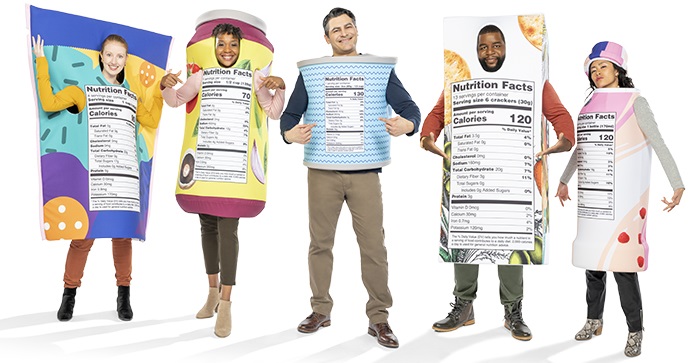Confused by whole grain labeling on cereal, bread and crackers and other food products? A new study published Monday by the journal Public Health Nutrition confirms you’re not alone.
A pool of over 1,000 US consumers asked to identify the healthier options based on whole grain content made the wrong choice 47 percent of the time for bread, up to 37 percent for crackers and 31 percent for cereal, which caused them to make fewer healthy choices when shopping, the researchers said.
Related: Move Over Nutrition Labels, Carbon Footprint Labels are Coming to a Snack Near You
The findings suggest that product labels related to grain content are confusing to consumers. Terms like ‘multigrain,’ ‘contains whole grains,’ ‘honey wheat’ and ‘12-grain’ can be used to tout breads, cereals and crackers as healthier options even if the product mostly contains refined flour, explained lead researcher Parke Wilde, a professor at Tufts University’s School of Nutrition Science and Policy in Boston.
These findings are significant since the 2015-2020 Dietary Guidelines for Americans recommends that half of all grains consumed should be whole grains.
Wilde and his colleagues showed 1,030 US adults images of real and hypothetical products specifically created for the study. The goal of the research was to “find whether consumer understanding of product labels meets a legal standard for enhanced US label requirements for whole grain products,” the study read. Since the legal standard related to deceptive advertising, and the study found that nearly half of those surveyed were confused by whole grain labeling, the results can encourage support for changes to existing regulations.
“For example, the ingredient list is required to present the ingredients in order from highest to lowest weight, and by reading closely you can determine how high up the list the whole grain ingredients appear – but beware, the term ‘enriched’ or ‘wheat’ does not mean the ingredient has whole grains,” Wilde said in a press release.
Study participants were shown various photos of products with front-of-package whole grain labels, along with the ingredients list and nutrition facts label for each product. The packages on the hypothetical products were either marked with ‘multigrain,’ ‘made with whole grains’ or a whole grain stamp or had no front-of package while grain label. The real products displayed the actual product markings on their packages, including ‘multigrain,’ ‘honey wheat,’ and ‘12 grain.’
When participants were asked to identify the healthier option for the hypothetical products, 53 percent selected the healthier bread option, while between 63 percent and 71 percent selected the healthier choice for crackers. Just under 70 percent chose the healthier cereal.
When asked to assess the whole grain content for the real products, which were not mostly composed of whole grains, up to 51 percent of participants overstated the products’ whole grain content. The results of the study led researched to the conclusion that there is a strong legal argument that whole grain labels are misleading.






Join or login to leave a comment
JOIN LOGIN